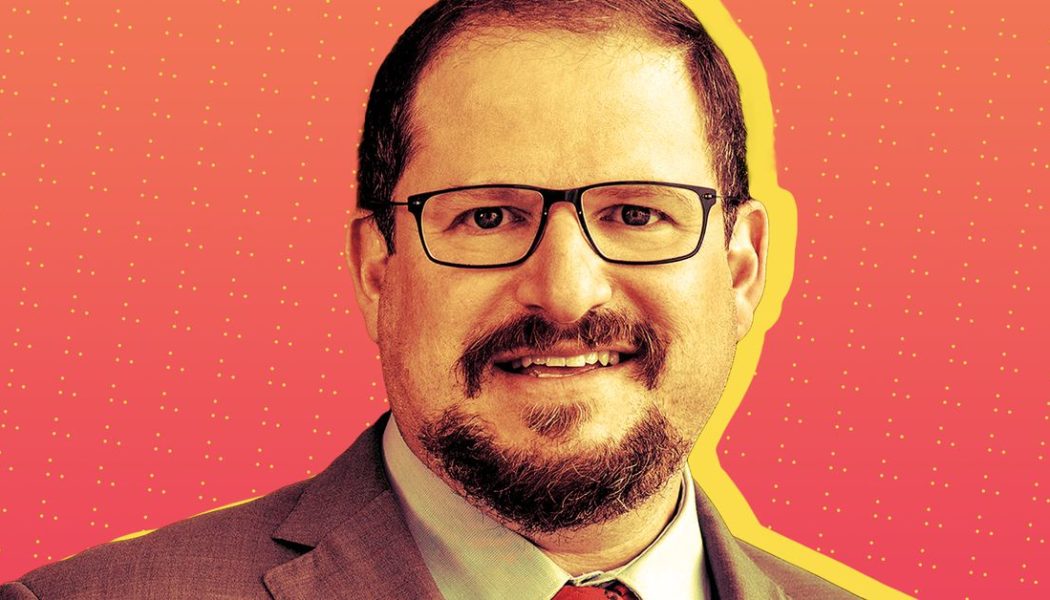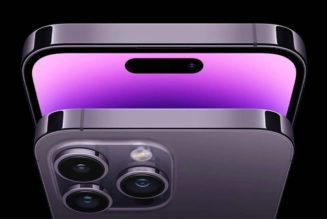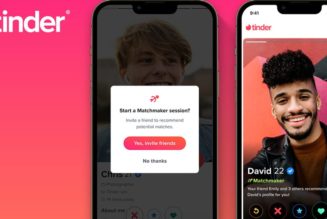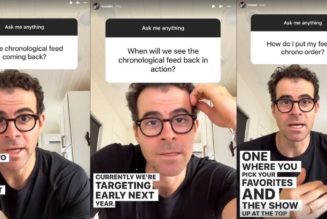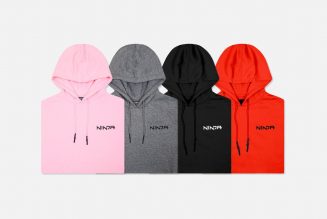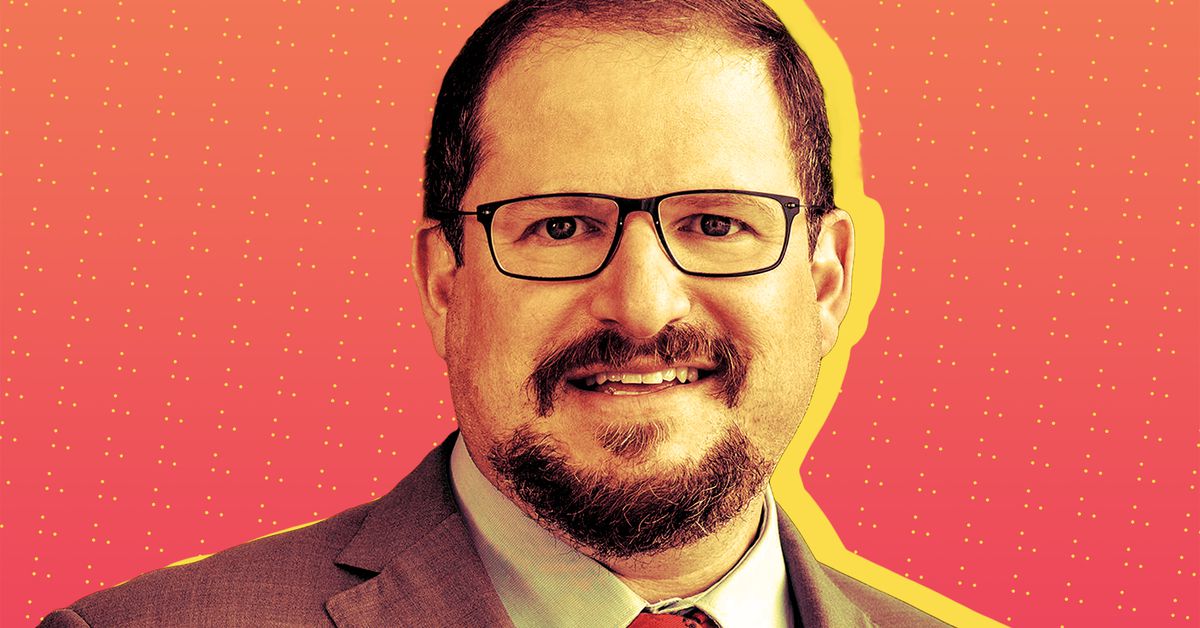
Cristiano Amon is the president and CEO of Qualcomm, and he’s always been a relentless cheerleader for what mobile computing can do for people — especially if that mobile computing is powered by Qualcomm’s chips.
And Qualcomm’s chips are in basically everything: the company’s wireless chips are in virtually every phone — actually every 5G phone — and its Snapdragon processors are in every major Android phone. Then it has businesses in cars, servers, VR headsets — you name it. The company is everywhere.
But relentless optimism can only get you so far — like everyone else, Qualcomm is dealing with a supply chain crunch, a global pandemic, and skyrocketing demand for chips that’s led to widespread shortages. On top of that, Apple’s A-series chips in the iPhone have long outperformed the Snapdragon line, and now the company’s M-series chips for Macs are upending the PC industry — a market Qualcomm still hasn’t really cracked.
So I wanted to know how Cristiano is thinking about Qualcomm’s future six months into his run as CEO: What’s working? What’s not? Where does he have to make changes to compete? How long will this chip shortage actually last? This is a pivotal moment for the chip industry, and I wanted to really push on how Cristiano is thinking about getting through it.
I also wanted to push on something I’ve always wondered about: Qualcomm is basically the only company that’s shipping a 5G radio in the United States — Apple might eventually have one of its own, but right now, it’s all Qualcomm. How did that happen? And where does Cristiano see any actual competition coming from, if any? I thought his answer was very revealing.
Okay, Cristiano Amon, the president and CEO of Qualcomm. Here we go.
Cristiano Amon, you are the president and CEO of Qualcomm. Welcome to Decoder.
Very happy to be here and good talking to you. I think it’s been over a year.
We last spoke a year ago — when you were the president of Qualcomm. Now you are also the CEO. I have a lot of questions about what your plans for the company are, but I have an executive from one of the leading chip makers in the world on the show. I have to start with the chip shortage. How is it going? How has it impacted Qualcomm? When is it going to be over?
Oh, very good. Thanks for the question. Nice to see you too.
Look, here’s the situation: this is one of the biggest supply chain crises we have had in chips, but also it’s because of something else; chips are now going everywhere. The percentage of digital in the economy is significantly higher. Virtually everything that’s being built now requires chips. I was talking with the folks in the Treasury Department about how there was a shift from services to goods during the pandemic. People buy more goods than services, and there are chips in all those goods. One thing we learned through the supply chain crisis — if I can say something that is positive of it — will be that chips are important.
There was an understanding of the importance of chips in our economy and the importance of semiconductor companies. As a result, a lot of companies that didn’t have a direct relationship with semiconductor companies started to forge those partnerships. It was a challenge for me, the first year as CEO. But it’s also an opportunity. I think we’ll be able to leverage on our assets of having a very large engineering capability to design our products across every available capacity out there in a very short period of time.
We bet on ourselves because we believe in what our volumes are going to be and we make commitments and we put our scale to work. On one hand it was a big challenge, but also an opportunity. We are probably doing better than other companies. Our supply has increased significantly. As we begin 2022, some of the planning for capacity expansions that we put in place is starting to materialize. It got reflected in our guide for the next fiscal quarter, as well. So, the chip shortage is not over yet, but things are getting much better as we go to the first half of 2022.
Can you see the end?
Yeah. We have a very balanced supply and demand equation as we get to summer of 2022. I know the other companies are probably talking about 2023 and beyond.
Does Qualcomm manufacture its own chips or are you handling designs while someone else manufactures them?
We are one of the largest fab-less companies. We have never had a fab. We have outsourced the manufacturing of our chips since the beginning of our company. We work with pretty much everybody: TSMC, Samsung, Global Foundries, SMIC, UMC — all of the companies. To give you a technically correct answer, we do manufacture one thing. When you talk about material science and especially a very complex filter technology for 5G radio signals, we manufacture our own filters. We do that in Munich and in Austria.
That’s fascinating, I didn’t know that. The reason I ask about manufacturing is, as I’ve talked to various executives about the chip shortage, they’ve all said things along the lines of what you just said: demand is really driving the shortage. People want more stuff. Everything has a chip in it now. The capacity wasn’t there. Then there were some COVID-related impacts, but it’s the manufacturing capacity that has to catch up to demand. That’s the end of the chip shortage for real. Are you investing in any of that manufacturing capacity? Are you partnering with any of those companies you mentioned? How does that work for you?
We’re investing indirectly. In our volume, we are very comfortable making long-term commitments in co-investing with our foundry partners to make sure capacity is there for us. Some of that started to materialize in decisions we made early on. We took action very quickly in the supply chain crisis. Some of that is already coming to fruition as we enter 2022. We’re indirectly investing as we make commitments. We invest together with our partners who are putting money down. Because of that, we secured a significant amount of capacity for Qualcomm in 2022.
The last question on this: there’s a lot of interest in making sure that manufacturing capacity is distributed around the world, particularly here in the United States. TSMC is building a plant here. There’s lots of interest in building a plant here. Is that something you’re directly involved in? Are you waiting to see what the actual fabs do?
Absolutely. This is a very important topic for me. Maybe I’ll just share something with you about a couple weeks ago. I was elected chairman of the SIA — the United States Semiconductor Industry Association — for this upcoming year. In that capacity, working with my colleagues in the SIA, two of our priorities are to make sure we get the CHIPS Act funded and get the FABS Act enacted. We advocate strongly for a geo-diversified, resilient supply chain. This is so important for the economy. I think we know that right now — whether it’s the auto industries or anything else you buy — chips are very important for our economy.
We needed to make sure that we have resilient, geo-diversified investments in the United States of foundries. It’s very important. Even new players — when Intel indicated they would like to be a foundry, we raised our hand and said, “We’ll work with them,” and we’re engaged with them as well. We work with anybody. On top of that, I actually really like the current discussions there have been between the Europeans and the United States. They’re both trying to solve the same problem and work in coordination. I don’t think one company or one region will be able to solve all of our demands for semiconductors, but we have to do something now to make sure we have a resilient supply chain for the next decades.
When discussing the chip shortage and the supply chain, people have generally known that we have needed a more resilient, diversified supply chain for quite some time. Then COVID hit and now there’s a real incentive to get that built. Is that your experience too — that everyone has known this is a problem, but it hasn’t been taken seriously until recently?
Yes, we have known that semiconductors will continue to grow. It’s not that I want to basically say Qualcomm has done great, but we knew about this. Compared to all of our peers, we’re probably one of the few companies that really diversified our leading node needs. We have been using TSMC and Samsung for many years. We split our business between two. We have multi-sourcing for exactly this reason. The latest and greatest technology would be designed for both Samsung and TSMC.
But I agree with you that this shortage brought this issue to the surface. A lot of companies — especially in the auto industry — didn’t even understand there were semiconductors in their chain. They became very aware of this. I think there’s now a real push to get this resolved, so I kind of agree with that view.
It’s interesting. When I’ve spoken to car CEOs, it’s like a revelation that they were so dependent on chips. They’ve all been telling me their cars are turning into smartphones for like five years now, but I think that moment of clarity finally hit. I wanted to start there because I know we have limited time and I didn’t want to get away from those questions.
No problem.
Let’s start at the beginning now: you are the new CEO of Qualcomm. This is a new role for you. You were the president of Qualcomm before. What has changed for you now that you’re the CEO?
When I became president, I was responsible for my semiconductor business, and back in 2018, I started putting the strategy and the execution together to diversify the company. I saw there was an incredible opportunity for technology in many different end markets. We have always been a company focused on mobile — that will never change. We will continue to be successful in mobile, but we had incredible opportunities for Qualcomm across a number of different markets. When I became CEO, it was an opportunity to really solidify that vision and clearly communicate it to not only the entire company and all of our partners, but also to the market. Since I got the CEO job, I’ve been preparing for our investor day that we did three to four weeks ago in New York.
There are a lot of things about Qualcomm that are important to be understood. We cannot be defined by a single end market and a single customer relationship. There’s a lot more to Qualcomm than that. We now have relevant technologies for so many end markets — we are becoming a company that is powering the edge. We unveiled that our addressable market can grow by 7 times, to $700 billion just within the next decade. That’s what changed. It’s the responsibility of being president and CEO to execute on one of the largest opportunities in the company’s history — and yes, I do feel the weight of that responsibility on my shoulders, but I’m excited about the opportunity.
Is it execution or did you change the strategy at all?
I won’t say we changed the strategy, but it’s more than execution. It’s the ability to build this vision: go bigger, faster. Leverage our technology roadmap — which is becoming very relevant because mobile technology is going everywhere —and quickly invest in the technologies that we need to execute in this vision. This wasn’t what I wanted to do after only 15 days on the job, but I had to put in a competing public bidding offer for the Arriver asset for ADAS [advanced driver assistance systems]. As soon as I got named CEO, I made the acquisition of a company called Nuvia because we wanted to have the best CPU team in the market. We believe we do. We wanted to be able to build brand new relationships with new customers in the US and with new markets. That’s all part of this set of activities. You can call it execution, but I think we are definitely in a hurry because the opportunities are right in front of us. We want to execute on it as fast as we can.
How many people work at Qualcomm?
It’s on the order of about 50,000.
Where are they mostly located?
The majority are located in the United States, but we have presence everywhere. Just an example: we have over 10,000 employees in India. We have several thousands of employees across China, Korea, Japan, and Europe, so it’s a global company. It’s very diversified and we take pride in the areas that we’re really focused on, like technology across modems, wireless, high-performance computing, and low-power devices. We just look where we have found the best possible talent and we have been building in those locations.
That’s actually my next question. How is the company structured? How big is the modem division and the computing division? How do you think about that structure?
Well, we don’t make some of those disclosures, but I’ll give you a—
This is a perfect time to make some of those disclosures.
No, that’s good! [Laughs.] I’ll give you a simple answer: engineers represent the absolute majority of our employee base. We’re a company grounded in a very strong engineering culture. It’s really one of the few companies that does fundamental R&D. That’s why we have so many essential patents — it’s because we focus on not only implementing new standards, but also creating them. We want to be really doing fundamental research. We made Snapdragon to power one of the most incredible mobile experiences, but we also put it into the Mars Helicopter and sent it to Mars. That’s a unique thing about the company.
The majority of our employees are engineers and we’re focused on two areas. One area that we focus on is everything wireless communication. We know the last mile of data is wireless, whether it is cellular, Wi-Fi, Bluetooth — everything high-performance computing for a battery powered device. That’s where you see us investing in CPU and DSPs — digital signal processors — and AI-processing GPU. The company structure is one where our engineers are divided for our mobile business, our auto business, our RF business, and this broad IoT that we presented in New York across consumer, networking, and enterprise.
What are the timelines those teams work on? Qualcomm made huge investments in 5G. We’re coming to sort of the mid-cycle of 5G. You have said 6G will be here by 2030, which is only eight years away. How far ahead are you making technology bets and investments?
That’s a good question. We usually invest for a decade. I’ll give you a perfect example of this: we talked about connecting physical and digital spaces when it wasn’t popular. We started talking about virtual reality and augmented reality when it wasn’t popular. Some of the bets that we made over a decade led to incredible technology that enabled the Oculus Quest from Meta and HoloLens from Microsoft. Now people understand the potential of creating digital twins and talk about the metaverse. We’re the company making the devices that connect the physical world with the digital world and we started working on that about 10 years ago. Every generation of wireless — the moment we complete 5G, we start working on 6G. I think that’s something unique to Qualcomm. We probably have the largest percentage of our revenue dedicated to R&D. We start everything around 10 years in advance.
Do you rank your bets? Do you think, “Okay, we have to put some people in the AR and VR stuff, because we think that might happen. That’s pretty risky. 6G is definitely going to happen. That’s less risky. We can invest differently.” Do you prioritize your bets that way?
Oh, I have a perfect answer for you! When I just did our last investor day, when we talked about this new vision of Qualcomm, there’s a slide that I presented that laid out all the industry trends, and I said, “Nobody here is going to dispute with us that those are industry trends.” Here’s the answer to your question: one of the things that always helped me in my career — and I think that’s also part of Qualcomm — is the ability to understand some of those key trends that are happening ahead of time. That’s how we make priority calls. We invest in those disruptions. We invest in those trends. That’s how we make our bets and that’s how we stick with those bets. You may think that there’s too many things we’re doing right now, but we’re dealing with the one technology roadmap that we have and it’s all based on inevitable trends that we see in front of us.
I can name a few trends: the digital twins everywhere with the metaverse. The other trend is the full conversions between mobile and PC — how PCs are becoming communication devices. I’m sure what you and I are doing right now is a communication use case for your device. This is how we think about creating smart devices connected to the cloud 100 percent of the time to enable digital transformation. It goes all the way to what’s going to happen with artificial intelligence: the artificial intelligence that we see today in the data center is just the tip of the iceberg. As you start to bring artificial intelligence to the devices, that’s an order of magnitude bigger. It’s almost like an unlimited addressable market. That’s how we make our bets.
Is there anything that you’ve ever made a bet on that you ultimately had to pivot out of, like 3D TVs?
Yeah, we have. Bad bets are just part of being in the technology industry. We have always been fortunate that we’ve been able to leverage R&D. I’ll give you two practical examples. At some point in time, we had this vision that TVs were going to converge with mobile. Just look at the use cases in your TV right now. You stream video now.
TVs are basically giant Android tablets now.
Giant Android tablets, yes. But we were too early — we needed to support the old and the new simultaneously. At the time, having to invest in a lot of legacy TV technologies wasn’t a great idea, so we pivoted out of the TV business and waited for the next opportunity. Another great example: we started working on data centers with ARM technology too early as well. While we had some assets, we focused on the future of what the data center is, moving at the edge. So we had high-performance computing for data center inference at the edge, but we really focused on the devices and everything was happening at the edge instead of the data center.
Let me push you on that logical next result from the data center. You mentioned mobile and PCs are going to converge and look more similar to each other than not. That is already happening. Qualcomm is on the third generation of chips in PCs. Microsoft has released some devices that run Windows on Qualcomm processors. They haven’t been a hit, so I wouldn’t say those ventures have been a huge success.
Meanwhile, Apple is a competitor and partner of yours. They have just shifted their entire laptop line to their own ARM-based chips, which has been a success. Apple has had a performance lead in mobile for a while now, as well as a performance lead over Intel in PCs. What’s it going to take for you to compete there? We’ve seen a lot of generations of these chips; we’re kind of waiting for the big inflection point.
This is a great question. That’s the reason you see a lot of generations — we start early. If you look at what’s happening right now, we knew that PCs needed to evolve into what we call next-generation PCs. When you buy a phone, you take the phone out of the box and you expect it to be connected regardless. Why is it any different for PCs? Also, as you start to move more and more things to the cloud, PCs being a connected device with high-performance connectivity is kind of a necessity. When we started doing this partnership with Microsoft, we knew that we needed to do a very big change — especially for the Windows ecosystem, which is very strong in the enterprise.
We needed to pull off a massive change to an established software ecosystem on x86, to ARM. When that will take multiple generations — case in point is Windows 11. Right now, Microsoft can support 64-bit apps’ emulation on ARM. Prior generations have still been able to run some of the applications, but they still didn’t have the full capability of Windows. This is completely transparent to the user. That had an impact on how much volume we could ramp. Our expectation at the time was that it would take multiple generations to build the ecosystem around ARM. Apple gave us an incredible tailwind. They just built more to scale, to the point that now all the developers are saying that they are going to develop ARM first. Just look at a company like Adobe.
On top of this, we had another tailwind: the future of work as we went into the pandemic, as well as gaming becoming a streaming service on PC. You had to change an entire ecosystem from a PC architecture to a mobile architecture. I think we’re just getting to that inflection point, so it’s not a surprise for Qualcomm.
If you look at what we have done in the past, we’ve never made heroic assumptions as a company. You didn’t see me making claims like, “Hey, the PC’s going to be this much percent of our revenue.” By that time, we knew we needed to switch an entire ecosystem — but we wanted to do it right and do it in a way that we’re going to win it. Look at the work that Apple has done for their products with the DM Series.
The transition to ARM is now inevitable. There’s no debate: 5G is going to come to your PC. If you’re now a flexible workspace employee with a huge workstation doing computer-aided design, you’re not going to carry that in a backpack. You’re going to have to do that on the cloud using 5G. Companies are getting all the data, moving to Microsoft OneDrive and other cloud drives. People collaborate with tools like Teams and Zoom. Streaming of gaming is coming — that transition’s inevitable. If you look at every company out there who has the assets to actually make this happen for the Windows ecosystems, that’s us.
Let me push you, though.
Please do.
The use cases you’ve described — the way that would be executed is almost what would be called a thin client model in the old days. You’ve got a big data center and a fast 5G connection — which, happily, Qualcomm has a lot of IP related to. That’s great for you. You’ve got devices with 5G modems; Qualcomm makes a lot of 5G modems, and then you’re streaming the games. You’re sharing the data over OneDrive. Those applications aren’t processor-intensive. Maybe you’re doing CAD over some sort of thin client, but you’re not doing a lot of heavy duty processing on it. Apple’s innovation is that their clients are wicked fast. Does Qualcomm see the ability to leap over Apple’s performance advantage — both in phones and on the desktop?
Great question. I have two answers for you. Let me start in reverse order. When we talk about, “What are we doing in PCs?” We’ve been investing and waiting for this moment to have an inflection point. We’re going to have that with Windows 11. We’re investing to have the benchmark performance of PCs across the CPU, their own device AI, and the GPU. So to date, our products have been focused on leveraging mobile as the focus on a consumer device. They will have like a two-in-one — an evolution of the tablet. You can think about how we probably can compete with an iPad within the Windows ecosystem. That’s what we’ve done today. Understandably, there were limitations on the software to be able to go to the enterprise, but not anymore.
That’s the reason we bought Nuvia: we think it is the best CPU team, and you should expect Qualcomm aiming to take the leadership position in performance. We’re going to have to execute it. Our first product was going to sample next year. It’s going to be commercial in 2023. We’ve been public about it, and people will be able to measure it. We’re aiming to have that benchmark of performance in this industry.
Here’s the second part of your question: computing on these devices is changing dramatically. Let’s just give an example on artificial intelligence. This is where I think you’re going to see Qualcomm shine because you cannot do those things on the CPU. You need dedicated hardware. Think about this: you are working with me, doing this Zoom meeting with me right now.
Your camera is always ready: looking at you and looking at everything else around you. All of a sudden, somebody shows up right behind you, looking over your shoulder. The camera can immediately detect and activate a private screen. The camera can also track your eyes and make sure you’re looking into its lens at all times with artificial intelligence. It can do facial recognition. On top of that, you’re going to have split rendering. As you get mainstream gaming into the device, you need to have the performance on the GPU to process all that while you’re streaming. I don’t think computation of requirements are going down even as you do things on the cloud.
Frankly speaking, there are a couple things that hold true in all of my multiple decades of experience working for Qualcomm — two things hold true. I’ve never heard anybody say, “Okay, now my internet speed is fast enough. I don’t want to go any faster.” I’ve never heard that. I’ve also never heard, “I don’t want a faster processor for the next generation.” So I think we’re going to be in good shape.
Here’s a question I’ve been dying to ask: you recently announced your newest chip, the Snapdragon 8 Gen 1. You changed the name of the Snapdragon line. The previous chip was the Snapdragon 888. Snapdragon 8 Gen 1 is not a great name. Why the change? Why do all chip makers tend to have these extremely difficult names?
It’s an awesome name. The explanation is super simple: Snapdragon became synonymous with premium Android experiences. It’s kind of reflected in the consumer; a big market like China, for example, has 80 percent awareness of the Snapdragon brand. Snapdragon’s flagship release was the 8 Series. You have to go generation to generation: you use numbers, but at the end of the day there is an incredible identity of 8 Series Snapdragon consumers. When a consumer buys a phone — especially in markets where the customer base really cares about what’s in their device — they’ll ask, “Does this have the latest Snapdragon 8 Series?” We’re just simplifying the brand. There’s more happening than just 8 Gen 1. We also used to be Qualcomm Snapdragon, but we simplified the brand to just Snapdragon. Everybody recognized that red fireball as a Snapdragon. It’s just simple. Single-digit eight.
Gen 1.
The next year after will be Gen 2.
See, you made some news. You announced a future product. I’ve never gotten a CEO to announce a future product. That’s great.
Every year we have a new Snapdragon. That’s not going to change either.
We’ve talked a lot about your future chip roadmap: the purchase of Nuvia, which is great on the CPU side. There’s also a lot of action on the GPU side of things in chips. Do you have a roadmap to compete with the Nvidias and the AMDs of the world on the graphics pipeline?
Here’s how you should think about Qualcomm: we have been doing GPUs for the phone space, and then we’re evolving into the auto space. We always had the highest performance per watt for the industry. What is good about GPU is, once you have the technology, it’s highly scalable. It’s parallel processing. You can scale up and down. We’re going to new end markets: automotive, the digital chassis. We’re going into the full market of the PC. You’re going to see the Qualcomm GPU scaling up and being extremely competitive. We ship probably more GPUs than anybody else because we do it on phones. GPUs are a technology that we’re very proud of and we’re very excited about what we’re going to be able to show as we get into the competitive PC space.
What’s the timeline of that?
The first PC chip with new technologies is going to sample in 2022 for devices launching in 2023.
I’m curious: it seems like Qualcomm is the only company that can ship a 5G radio in the United States. Apple bought Intel’s business, but they haven’t shipped anything. I think they’re still using your modems. How did Qualcomm end up in the position where it dominates the entire market for 5G radios in the United States? Where are we on the curve? Is it fast enough? Are you seeing the promise of 5G? So far it seems like a lot of the promised applications have not really come to pass.
Let me start with the promise of 5G first. It’s always music to my ears when I hear that. I remember in the 4G era, people said, “What am I going to do with this technology until the smartphones show up?” And you put a computer in their hands. Now we have a very mature society that sees the value of cellular. People say, “Why am I not getting it today?” That’s awesome. This is a very good position to be in. The problem with 5G is that it takes a bit of time to build the infrastructure. We’ve done better on the device side, but with infrastructure, you have to densify the network. You need more cell towers. As a result, it takes longer to build than the initial buildout where you just could put new equipment in the existing tower.
You need to get new cell towers and get new permits. It’s happening on a global scale. The number of carriers investing globally in 5G and densifying the network — it’s happening. It just takes a little bit more time. It’s very clear that we’re going to get there. As we start making use of some of the new frequencies of 5G, like the millimeter wave frequencies, you’re going to have gigabit speeds in every device. That’s going to make a difference. From a technology standpoint, we went to a summit in Hawaii two weeks ago. It’s the show where we always announce our product lineup. We did the world’s first: 3.5 gigabit per second uplink. I actually did a live call with Verizon wireless from the event. By the way, the YouTubers in the audience were cheering.
This type of uplink on this magnitude could improve a lot of things. Social media will change: people can broadcast themselves. Some will like it, and some won’t. I just talked about YouTube. We think about the ability to access computational resources on the cloud and collaborate on documents — all those things. I think that’s going to bring a lot of developers onboard, so it’s just a matter of time. We’re starting to see changes already in user behavior. We’re moving towards unlimited data rates everywhere. Wi-Fi is going to be everywhere: unlimited data rates, high speeds, high uplink speeds and the developer ecosystem is just the beginning of that ramp.
The last part of that question: I don’t like the word dominant, but the way I would argue—
I could imagine that.
We’re very focused on this. This is one of the main things we do for a living. We always have done more. Qualcomm is “quality communications” — that’s our name. We have been the leader in every single generation of wireless. It’s not a coincidence: we invest, we have one of the best teams, and we always raise the bar. As long as wireless communications remain important, there will always be room for Qualcomm. We’re always going to be first.
Who are your biggest competitors in modems in the United States?
We have competitors everywhere. For example, Apple said that they’re going to develop their own modem. When out in New York, we basically said, “Look, we’re assuming that the iPhone will launch in 2023 with their own modem and Qualcomm will then supply only 20 percent of those modems.” Let me give you some data points. Usually when you launch a product, you need commercial software and hardware for the device about one year before it gets to the shelf. We’re assuming that they’re going to have their modem and they’re going to have all the capabilities, including the millimeter wave. That’s our projection.
People sometimes ask the question — you didn’t ask this time — “Why don’t you build your own foundry?” It’s because we’re not good at that. We’re good at building chips and designing chips. We’re not good at foundry, but sometimes customers want us to do everything. This is not news to us. We always had Samsung, for example, who had their own modem and their own chip, but over the years, I think the Qualcomm relationship with Samsung has remained stable. Right now, it is on an upswing trajectory. We keep focused on doing what we do best and see what happens.
But my iPhone 13 Pro Max — long name — has a Qualcomm modem in it right now.
Good for you.
Well, Apple isn’t shipping the others. Are there any phones in the market that don’t have Qualcomm modems in the United States?
I would imagine you’re going to find that some of the entry-level prepaid phones in the United States don’t have Qualcomm modems. Here’s what makes the United States very unique: it’s a very safe cellular environment compared to what you see in some other countries. The operator in the United States will test all the phones and make sure that they meet the latest standards and that they’re compatible with the network. They make a selection on the technology that goes into the phones they put on their shelf. As a result, I think the US operators always select the best-performing modem available. When you go to emerging markets, sometimes the OEM controls the channel; there’s a channel that sells consumer electronics and the operator has no control over it. Maybe that’s the difference.
The reason I ask is because Qualcomm just made a phone — the first phone I’ve seen directly from your company, called the Smartphone for Snapdragon Insiders. It’s very much not meant to compete at mass scale, I don’t think, but I’m curious: you didn’t build a foundry, so why make a phone?
No, it’s not. We don’t make phones. That phone was designed by Asus. It’s been designed to a special set of specifications just to highlight some of the capabilities of the Qualcomm processor. It was a limited-production device, only for Snapdragon Insiders. As we grow into a mature smartphone society, people care what’s behind the glass. Phones are the number one consumer electronic purchase decision for many users. It’s remarkable how educated consumers are right now on technology; they want to know the capabilities of the processor. We’re positively surprised to see how many fans exist out there for Snapdragon. We created this Insider program, and it’s been incredibly successful: multiple millions of users in a very short period of time.
We probably announced that we are approaching — if not exceeded — 4 million users since we launched. We built it with Asus, the same company that built the Republic of Gamers device. They built a device just for the Insiders that highlights Snapdragon. We’re not in the phone business. We have a horizontal platform that enables collaboration, and that’s why we have been successful. I have always believed that the horizontal model is going to be better than the vertical model: you don’t have only one company doing all the innovation. You can pool the collective innovation of all the companies.
The Snapdragon phone highlights the chip and its capabilities because you would sell that chip to some phone maker who would add their differentiation. That phone maker would either opt to use your features or not, and then they would have to go to a carrier — The Verge covers how the carriers interfere in phone design quite closely — they would make some decisions. Getting your innovations directly to consumers is challenging, so you can build the phone and then sell it directly to some set of Snapdragon fans and show them all the things you’re working on.
The intention was to build the phone to show some of the capabilities of the chip. When a phone gets built, one of the decisions that OEMs make is how many different frequency bands you’re going to put in the phone. And you say, “This phone is going to go to this market. I’m going to put all the frequency bands that are required by this carrier, maybe some extra for roaming.”
One of the things we did with that phone was include every frequency band known to mankind. We installed every single band. It’s going to work everywhere across every operator. Once we build every new chip, there’s something that we do which is called the MTP. I think the engineers that are familiar with this probably know about the MTP.
For every single new chip at Qualcomm we produce, we build a phone. It’s called the mobile task platform: a phone that we ship to our customers so that they can start developing their software as they build their own phone. One of the secrets people don’t know about Qualcomm is that with every new chip we make, we build the phone ourselves.
There are two types of devices. One is the MTP that is a little bigger. It has a lot of probes that people can put in to get data in from the device. The other one is called the QRD — the Qualcomm Reference Design. It looks like a phone. We take that phone and test it across every corner of the globe. We validate the technology so it performs at its best. That’s one of the things we’re doing with the Insiders: just giving them a phone that is the Qualcomm gold standard.
Phones are interesting. I think there’s a very good argument that the smartphone is the most important new product in the history of technology, maybe through all of history. Everyone on Earth has a phone, and is going to buy another phone in two years. Mobile phones are the biggest tech market I can think of. Is there another market like that in your future that you can identify? Is it AR and VR, or is it just lots of new markets?
Of course there is another market. I know we talk a lot about phones, but the story of Qualcomm right now is very different. Yes, there is a huge phone opportunity — we’re going to be there. The technology we develop for the phone market is changing the automobile and the PC, as well as VR and AR devices. It’s shifting how you approach the home with enterprise transformation. We’re changing the Wi-Fi access point in the home. Smart IoT devices are changing the enterprise in a very big way, and that’s kind of reflected in the plan for Qualcomm going forward. And it’s not just a plan— if you look at what we did at the end of this fiscal year, the market was surprised. I think they were so obsessed with examining Qualcomm’s relationship with Apple that they were not seeing what else was happening.
We had over $10 billion of non-handset revenue. That sector now represents 38 percent of Qualcomm revenues. I think that’s a sign that not only is there opportunity, but that this growth is already happening at scale. I think we have a number of bets that could be as big as phones. I’ll give an example of one that is more futuristic, but will happen eventually. As augmented reality becomes more pervasive, I can see that we are going to buy a set of glasses, which will be a companion for your phone for a while. That’s going to last for a long time until the glasses become standalone. While you would argue that maybe humans won’t use a big helmet, they will use something like regular glasses. You can put cameras on it. You can render things.
Here is a simplistic way to describe this to you: all of a sudden we started to see iPads and we started to see Android tablets. All of a sudden you have to render any given application in a different way on a bigger screen. You can start with something as simple as rendering some applications or notifications. In addition to that screen, your phone’s going to render to your glasses — augmented reality. Then you get information from the glasses that will create a new set of applications. I think augmented reality glasses can grow to be as important as phones, and will start as a companion to them.
Let me ask you this question that I ask everybody about AR glasses. I already know what the killer app for AR glasses is. It’s the thing I want the most: I want to look at somebody that I’ve met before and have the glasses tell me their name, because I’m horrible at faces and names. That’s it. I think you could probably sell that product to everybody in the world. How do you build that application without building a worldwide facial recognition database?
Look, there’s many more applications than that one. Let me—
But that’s the killer app.
There’s more. I think there’s more killer apps than that. Let me try to give you another choice.
But answer that question: can you build that application?
I think it’s possible to build that application and you can do that application in many different ways. For example, you could build an application that’s going to be useful for you. There’s going to be a camera in your glasses. You see somebody’s face, you go to the cloud, and search what’s publicly available on LinkedIn, on Facebook, on Instagram, and you just compare and contrast. The device prompts you with some choices for you in the same way that it works today. When you have somebody’s name, you can go online and figure out: “Do I know this person or not?” At the end of the day, you can build this in many different ways.
Let’s talk about a different application of the glasses that has been incredible: education. If you’re in a classroom, you can superimpose images on your glasses. With virtual reality you can go to different places. You can watch how an event happened if you’re studying history. You can be in a virtual classroom. We have been tackling this issue with every generation of wireless: how do people communicate? When we started with 2G cellular, the big question was the capacity of CDMA: can we make sure that everybody has the ability to have a cell phone?
Every individual on earth can have a telephone. That was 2G cellular. You started to see the beginning of data. With that came things like email and everybody holding onto their Blackberries, so you now have two ways of communicating. You’ll be able to talk to somebody, and you can also text or send an email. 4G is a whole different ball game. When you look at what we have right now with 4G, people are making fewer and fewer voice calls. Then something happened: it took a pandemic to finally create video telephoning as the killer app. People have been trying to chase that since the early days of 3G: “Oh, the killer app is going to be video telephoning.”
It didn’t really materialize back then. It took a pandemic, but now it’s the killer app — so much so that when people get a video call, they’re holding their phones right in front of their faces. It’s actually changing behavior. You hold your phone with your hands to text, or you hold it in front of your face to have a video call.
Here’s how you could have a voice call with glasses: a friend calls you, and you could render that person right in front of you. That’s one other way to think about applications on the metaverse: you can have a hologram or a telepresence of somebody in front of you. You have sensors in the glasses that detect your face movements with artificial intelligence. You can render yourself to the other person without a camera looking at you. We have the ability to fundamentally change how we’re going to communicate with each other as we take advantage of those new technologies. That could be a killer app.
Are you invested in the display side of these glasses? I’m very curious what display technology will win out for these glasses right now. We just had John Hanke from Niantic — Qualcomm has built a reference design with them. Waveguide displays; that’s what we see everywhere. Do you think that’s it, or do you think there’s some other possibility?
Our model is the same thing. I would argue we have one of the best image signal processors in the industry for cameras. That’s why we always have the highest DxOMark score: we partner with image sensor companies like Sony and with Samsung. I think that would be the same display. We’re going to partner and do co-development to put them in the reference designs.
Display technology is getting there. It’s probably lagging a little behind some of the silicon and processing for some of the applications. We see a roadmap to get that done. It’s fair to think that within the next four to five years, we’re going to have devices that are going to be doing exactly what we just discussed.
Do you think there’s a consumer device in four to five years?
I think so. We have consumer devices available now, but given the maturity of the technology, it would take around that long to get to that type of killer application that you and I just talked about. I think that’s very realistic.
Last silly question. I feel like we talk about the metaverse — AR, VR — a lot as an industry trend. The other industry trend that is somewhat connected to it is crypto, NFTs. Do you personally own any crypto or NFTs? Is Qualcomm making any company bets?
It’s not a silly question at all. One of the incredible things that we announced: the new Snapdragon 8 Gen 1 now has the ability to mint and generate NFTs. We always believe in smartphone technology’s ability to enable the users. You have artists creating digital content and you can now mint and create your NFT from your smartphone with Snapdragon 8 Gen 1. I think that’s going to enable incredible scaling of these new technologies. That’s an awesome feature by the way.
What about you? Have you dabbled? Have you made any crypto purchases? Do you have any NFTs?
No, I haven’t had time to do it. I’ve been busy.
The life of a new CEO. All right, Cristiano, that’s a great place to end it. Thank you so much for coming onto Decoder. I really enjoyed it.
I love doing it. Thank you for the opportunity.
